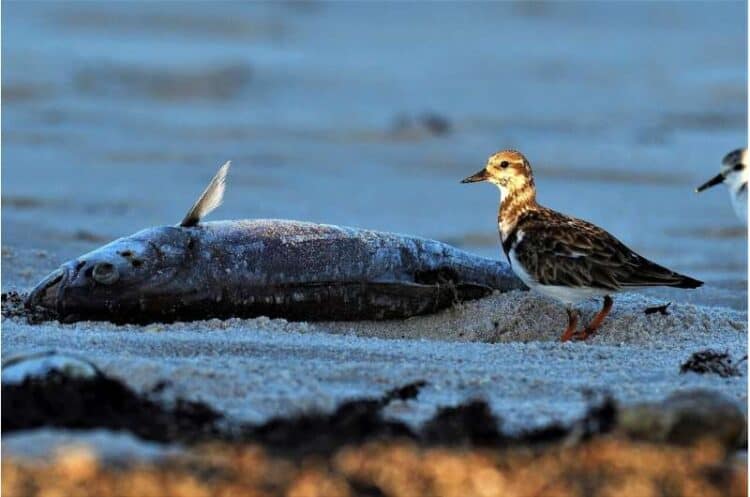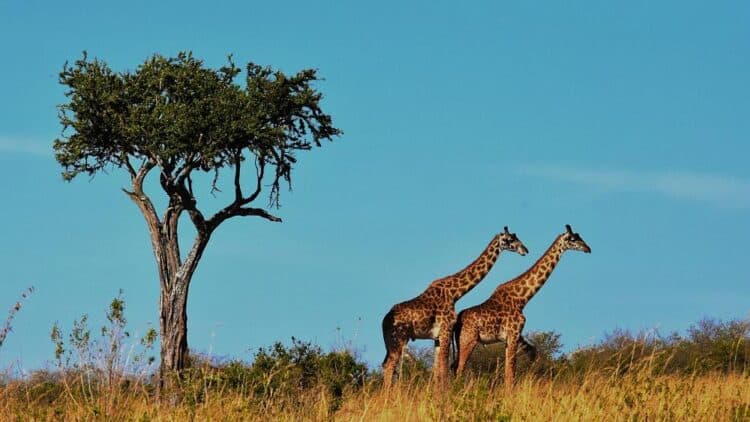In early 2017, the government of Kazakhstan introduced a ban on spring hunting. One year on, Danara Zharbolova (ACBK/BirdLife Kazakhstan) reflects on why this decision was – and remains – so important.
Never has the expression “to be full of the joys of spring” rang so true than when all of us at ACBK/BirdLife Kazakhstan first welcomed the news of our government’s plans to introduce a ban on spring hunting.
For us, this announcement brought much-needed new hope for many magnificent species that make our country their home – from ducks, geese and swans to grouse and woodcock. And, of course, the great brown bear!

The decision, which came into effect in time for the 2017 spring season (16 February to 14 June), was a giant leap towards better wildlife protection in Kazakhstan. It also came in the wake of many years of hard advocacy work by ACBK.
Back in 2014, after gathering environmental data in support of a spring hunting ban for water birds, we submitted our findings to the Forestry and Wildlife Committee of the Ministry of Agriculture; and then in 2016, at this committee’s request, we reviewed the effectiveness of limiting the shooting season together with the Institute of Zoology of Kazakhstan.

So why did we need a hunting ban? And why does the ban’s continuation this year and after remain so critical? To start off, the numbers speak for themselves, and they tell a sorry story. The numbers of many common waterfowl species – swans, ducks and geese – that nest or fly over Kazakhstan are half of those in the mid-1990s. Meanwhile, black and wood grouse numbers began showing an alarming downward trend between 2013 and 2016. These birds already have serious challenges to contend with, most notably habitat loss and climate change. Therefore, to allow hunting in springtime – that is to say during the critical mating season – is clearly a recipe for disaster.
In Kazakhstan, water birds are most affected by hunting. Though officially, only male ducks were permissible to hunt, because many species choose their mates during the overwintering period, the risk of one of the pair being killed in the spring dramatically reduced the chance of producing young. Furthermore, it’s proven impossible for rangers in hunting areas to effectively monitor and enforce hunting laws due to staff shortages and lack of training. Consequently, female ducks and protected geese and swans were also being killed illegally.

And the spring situation was not much better for the brown bear (Ursus arctos arctos) population in East Kazakhstan. In spring, bears, including females with their new-born cubs, emerge from their dens. It is difficult for hunters to distinguish between males and females and therefore the risk of killing a female that has a family is just too high. The cubs are also hard to spot in the undergrowth, and without their mother, their chances of survival are slim to none.
A year on since the ban was first brought in, all the above rationale for maintaining it remains the same. And despite some protests and petitions against the ban – both last year and again this year – ACBK continues its work to uphold it unfazed.

Encouragingly, there has also been a lot of positive support for the ban. Even some hunting groups have started conducting waterbird counts and have reported a positive trend in the growth of nesting birds: In North Kazakhstan, for example, 46,600 geese were counted in breeding grounds in 2016 and 55,000 in 2017; while in the Karagandy region, the number of ducks counted rose from 472,000 to 512,000 during the same period. Nesting birds have also been counted where they had not been surveyed before.
This results are very promising, but we need to build on this good start. On the one hand, we need to ensure better enforcement of the law. And on the other hand, we also need more accurate bird counting. Surveys routinely class birds by very general categories such as ‘duck’ or ‘geese’ when proper records by species is needed. Some species are, as a result, left out entirely, such as the Eurasian woodcock. It just goes to show, that ACBK still has a lot of work to do, but we’re certainly ready to ‘spring’ into action!
This article was written by Danara Zharbolova – Head of Communications, ACBK (BirdLife Kazakhstan) and published by BirdLife International on 26 Mar 2018.






Leave a Reply